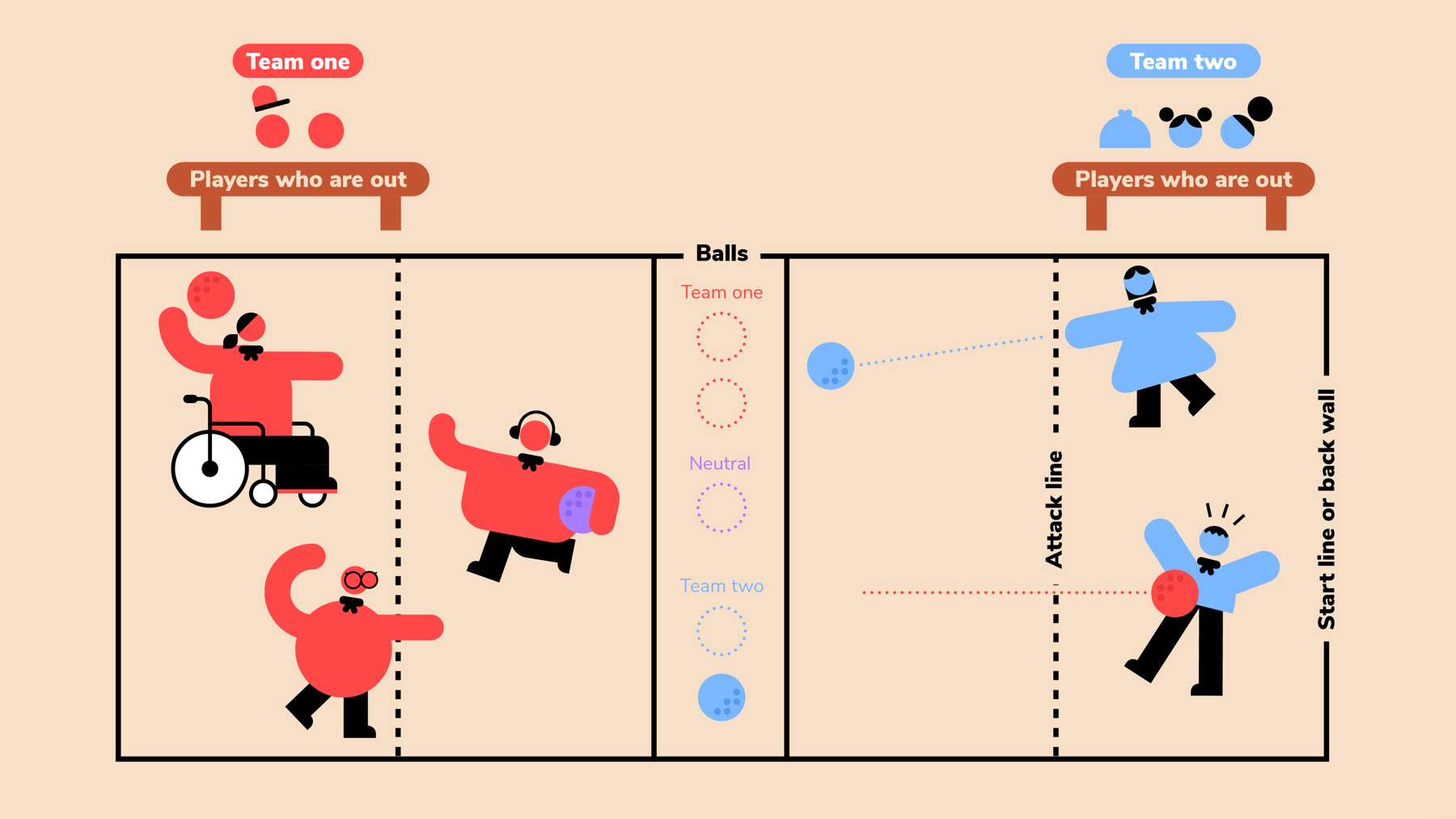
Dodgeball dream team
You’ll need
- Whistles
- Soft balls
- Something to mark lines (for example, chalk, masking tape, or rope)

Before you begin
- Make sure there are no obstacles in your playing area that might get in the way of the game.
- Mark out the playing area with masking tape or chalk. Begin by marking out six parallel lines, spaced as shown, around which the rest of your court can be drawn.
- Put three soft balls on each side of the central zone of the court.
Play dodgeball
- Everyone should split into two teams of about eight players. Each team should stand behind their start line.
- The person leading the game should put five balls on the middle line. The two balls to the left of each team belong to them, the middle ball is neutral and up for grabs.
- The person leading the game should blow a whistle (or count down from three to one) and everyone should run forwards to the middle line. Everyone should try to collect the two balls belonging to their team, and the neutral ball.
- As soon as players get back to the attack line, they should throw or bounce a ball at the opposite team. They must aim beneath people’s shoulders.
- If a player hits another player below the shoulder, that person is out. If a player throws the ball and the person they’re aiming at catches it before it bounces, the player who threw the ball is out.
- Anyone who is out must move away from the court for a set amount of time – it’s up to the person leading the game how long.
- If a player catches the ball before it bounces, one ‘out’ player can re-join their team.
- The person leading the game may count hits or catches as points, they may decide to play until a whole team is out, or they may set a time limit where the game ends and the team with the most players left in play wins.
Reflection
This activity gave everyone a chance to be active while learning a new sport and its rules, skills, and techniques. Did everyone enjoy the new game? What kinds of skills did people need? People may think about running, dodging, throwing, swerving, and keeping their eye on the ball. How did people feel the first time someone threw a ball at them? They may have been a bit scared or nervous at first - did this chance as they carried on playing?
Dodgeball is a team game. How did people help their team? Some people may have run fast to catch the ball, others may have moved into a space when someone was out. Maybe some people stayed positive when they were out so chose to keep encouraging their teammates. It’s great when people try a new sport and don’t give up - well done.
Safety
All activities must be safely managed. You must complete a thorough risk assessment and take appropriate steps to reduce risk. Use the safety checklist to help you plan and risk assess your activity. Always get approval for the activity, and have suitable supervision and an InTouch process.
- Active games
The game area should be free of hazards. Explain the rules of the game clearly and have a clear way to communicate that the game must stop when needed. Take a look at our guidance on running active games safely.
- Contact games and activities
Make sure everyone understands what contact is acceptable, and monitor contact throughout the activity.
It’s up to you how many players play at once - you may want to use people as substitutes. It’s also up to you how many balls you use. You can add or remove them based on the pace and energy of the game, or the space you have available. Finally, it’s up to you which rules you use. You may want to give people longer than five seconds holding the ball, for example.
You can play sitting down. All teams should be mixed ability. If anyone’s nervous about the ball coming towards them, it’s OK if they want to watch until they feel ready to join in.
All Scout activities should be inclusive and accessible.


